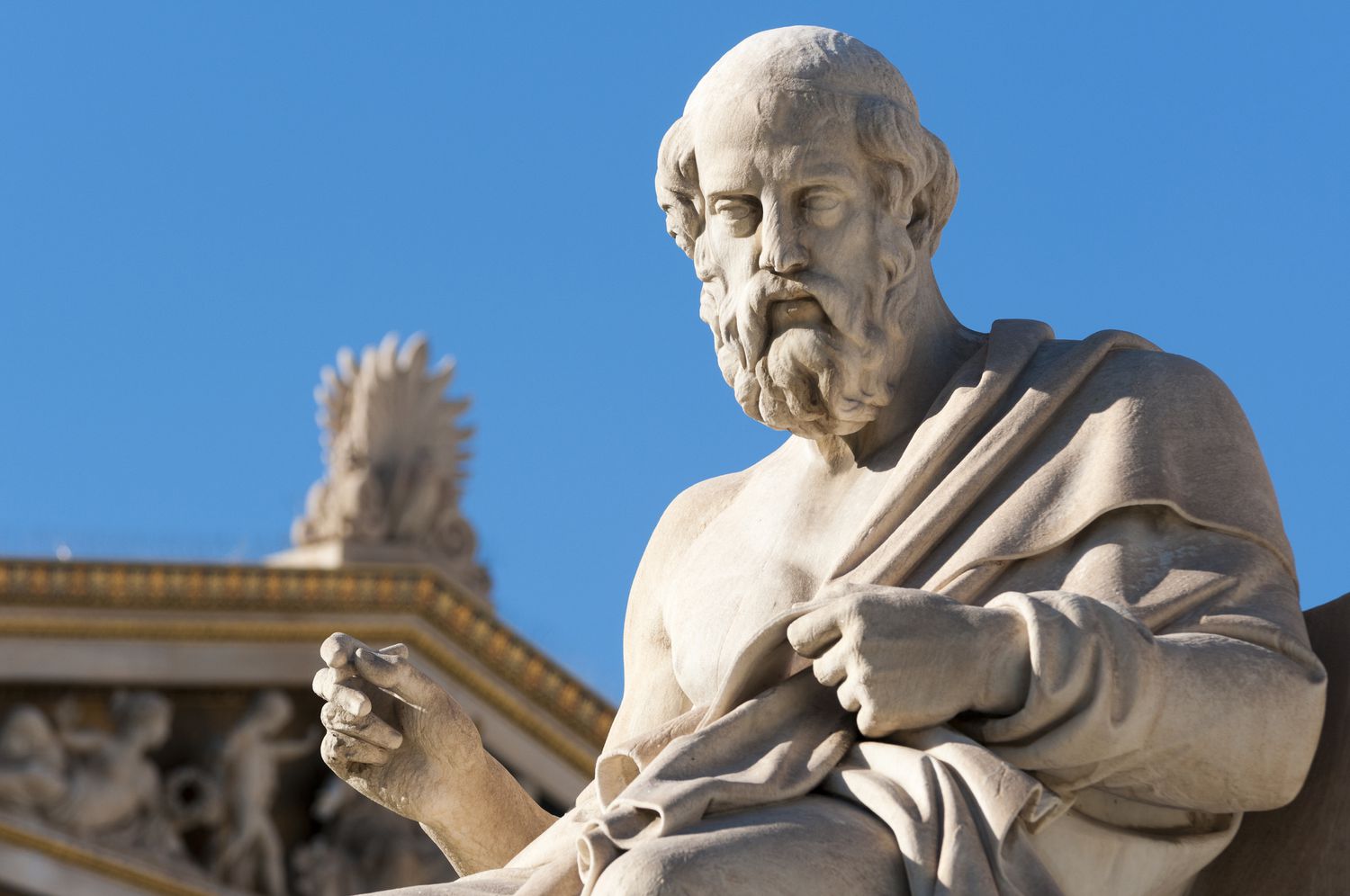John Keats (1795–1821) wrote in his celebrated meditation upon mortality and immortality, “Ode on a Grecian Urn”, “But what is beauty, and what is truth? “ These are some of the questions which aesthetics tries to answer. Aesthetics (the plural form of aesthetic) is derived from the Greek word aisthētikos, from aisthēta, meaning things perceptible by the senses. In the 18th century aesthetics became a branch of philosophy. The German philosopher Alexander Gottlieb Baumgarten (1714–62) first used the word in his Reflections on Certain Matters Relating to Poetry of 1735. Then, in 1750, Baumgarten entitled an unfinished treatise Aesthetica.
Today, the word “aesthetic” is frequently encountered in its negative form: “anaesthetic”, which refers to a substance that induces an absence of sensation and an inability to feel pain. Aesthetics has come to be used not just in relation to philosophy, but also in connection with design and fashion (e.g. the designer of a car will refer to its aesthetics, or an interior designer will use the word to refer to the look and style of their designs). Similarly, “aesthetic” is used in connection with art to describe the sensibility and style of an artist’s work.
For example; BARNETT NEWMAN’S PAINTINGS HAVE A MINIMALIST AESTHETIC … ANDY WARHOL’S HAVE A COOL AESTHETIC. JACKSON POLLOCK’S HAVE AN EXPRESSIONIST AESTHETIC …
Having the same root as aesthetic, the word “aesthete” refers to a person who professes a superior appreciation of what is beautiful.
Oscar Wilde, who dedicated his life and work to a love of art and beauty, is often cited as an aesthete. Wilde believed that art should be valued for itself alone and not for any purpose or function.
THE ONLY EXCUSE FOR MAKING SOMETHING USELESS IS THAT ONE ADMIRES IT INTENSELY DOES THAT MAKE ALL ART USELESS?
Wilde attempted to preserve an area of aesthetic experience – the appreciation of beauty – apart from utilitarian values fostered by Capitalist economics. The tradition of philosophical aesthetics on the Continent went further than Wilde by questioning whether experience could be represented or assigned a moral value. This tradition had its origins in the 18th century.
The artistic and scientific cultures have intrinsic distinctive characters. The first culture is by definition subjective, the second is instead objective, and thus necessarily subjected to validation. The essence of science is progress, whereas the idea of progress is supposed to be alien to art. Finally, there is the matter of aims: that of art has been traditionally assumed to be the production of beauty, that of science the achievement of truth. Whereas the first point of distinction—subjectivity as opposed to objectivity—is obvious, the other points must instead be better defined and discussed. This contribution will do it: while acknowledging the intrinsic differences between the two cultures, it will endeavour to bring them closer together by analysing the differences in some detail. In particular, it will try to show that the search for beauty and for truth is a unifying, rather than a distinctive character of art and science.
Following Baumgarten, aesthetics as a philosophical activity became concerned not just with the question of beauty but with the whole nature of experience in terms of perceptions, feelings and emotions. Philosophers, however, quickly realized that this inquiry opened out onto issues of subjectivity and identity and the potential for transforming values and beliefs. This is because the issue of experience relates to the question of consciousness and, by implication, the role of unconscious experience in shaping identity. So, while aesthetics began as a specialist branch of philosophy, it was actually in the right position to form the kernel for nearly all future philosophical inquiry.
Prior to Baumgarten, aesthetics did not exist in name as such. Nevertheless, there existed a long-standing and important tradition in philosophy which was concerned with the meaning and significance of perception and sensory experience. This tradition stretches back to Plato and classical philosophy, in which issues of beauty and truth were first coupled together. It is important to bear in mind that, in the classical period, the truth was associated with religious and ethical ideas. Plato’s philosophy was based on the teachings of his mentor, the itinerant philosopher Socrates (470–399 BC). In common with the rest of Greek society, Socrates held religious beliefs which were metaphysical in character. Metaphysics is a dualistic system – the gods exist in a higher transcendent realm and the world down below, inhabited by humans, is a pale imitation of it.
In addition, Socrates stated that these Forms contained the inherent structures to be found within all existing objects. However, he differed from the majority of Greek society by valuing wisdom and virtue in contrast to the warrior’s attributes of bravery and strength, which were thought to find favour with the gods. Following Socrates, Plato (c. 427–347 BC) argued that philosophers, such as himself, were uniquely in possession of the correct virtue – namely, wisdom – for attaining knowledge of the higher Forms of the universe. By defying currently held views, Socrates and Plato embarked on a power struggle with the state and religious hierarchy of Athens. As a way of defining his position, Plato contrasted philosophy with both art and poetry, which he stated were immoral and untruthful.
On account of their dangerous influence, Plato in The Republic (c. 375 BC) banned artists and poets from his ideal state. The idea of poetry’s power to affect the viewer was a loaded issue in Plato’s time. Poets were believed to have access to the muses, the daughters of memory who possessed historical knowledge and insight into the gods’ motives. Furthermore, poetry had a high public profile since plays were written in verse; it was also the custom to read poetry aloud in public forums. In making his negative judgement of poetry, Plato particularly castigated the work of Homer (c. 800–700 BC), the author of the Iliad and the Odyssey. Taking as an example Achilles’ sorrowful reaction to the loss of his comrades in the Iliad, Plato complained that Homer portrayed death as an evil to be feared rather than as a reminder of the riches to follow in paradise.
Plato also viewed painting (i.e. wall painting) derogatively, as an imitative art based on the copying of Nature. He compared painting to a mirror. For this reason, Plato argued that painting is “twice removed from the truth”, not even achieving the status of carpenters’ artefacts which, he asserted, represent the blueprint of the higher Forms at one remove. Although Plato condemned art, he never entirely disassociated art from the truth. Rather, he stated that art is a pale mirror, or poor copy, of the truth. However, in The Sophist (360 BC), he discussed a category entirely apart from the truth, which he termed “simulacrum”.

Plato derogatively likened the Sophist philosopher to a magician: “a cheat who imitates reality” (The Sophist). Today, the word sophistry refers to a specious or deliberately deceptive form of argument. Subsequent philosophers, such as Friedrich Nietzsche, and postmodern philosophers influenced by him, for instance, Gilles Deleuze and Jacques Derrida, saw Plato’s arguments about the simulacrum as the Achilles heel in his philosophy.
Following Nietzsche, as we will see, postmodern philosophers nullified the opposition between truth and falsity. This, in turn, led to a re-evaluation of art’s relation – or non-relation – to the truth.
The postmodernist critique of Plato was anticipated in classical times in a celebrated story told by the Roman scholar Pliny the Elder (23–79 AD) in his Natural History. Pliny described a competition between the painters Zeuxis and Parrhasios during the 5th century BC. Zeuxis painted a bunch of grapes so lifelike that they attracted the birds. Plato always maintained that truth and falsity are opposed. This idea is perpetuated in the confusion arising from Zeuxis’ painting. But Parrhassios contradicts this notion by revealing that deception is the truth, and vice versa. The French psychoanalyst Jacques Lacan was particularly fond of this story, and quoted it in his seminars during the 1960s and 70s.
The Poetics (c. 335 BC) by the Greek philosopher Aristotle (384–322 BC) offered the most extensive analysis of art after Plato and served as a riposte to his condemnation of art. The Poetics laid the foundations for modern aesthetics. In addition, the Poetics explored what the relationship of works of art to reality might entail. As with Plato, Aristotle’s ideas about art made use of the concept of mimesis, or imitation. Aristotle rejected Plato’s idea of art as a distorting mirror of reality. Instead, he analysed art in terms of its ability to engender emotion – especially emotions of pleasure and pain.
Aristotle argued that the mimetic structure of art is embedded in the interaction between the work of art – poetry, drama, painting, sculpture, music and dance – and the audience. He stressed the fact that works of art have their own structures and forms which are independent of structures and forms in reality. Since art has its own internal sense of structure and organization, Aristotle argued that it has a fictional status, rather than a false status as Plato had done.
Although art possesses its own independent structures, Aristotle proposed that it is understood, evaluated and, ultimately, appreciated by the audience through a range of concepts derived from experience and life. Aristotle argued that the audience brings to bear these issues upon the work of art and, in turn, is affected by its expression of them. Aristotle maintained that the fictional status of art makes it possible to appreciate and enjoy things that are, in reality, unattractive or painful. The experience of a work of art is different from reality, but its emotional effect is dependent upon its relationship to reality. Similarly, the material form of works of art – colours, shapes, words, rhythms, choreographic patterns – are also rooted in reality.
“Beauty is truth, truth beauty,"--that is all you know on earth, and all you need to know.
But what on earth did Keats mean? T. S. Eliot called the lines "meaningless" and "a serious blemish on a beautiful poem." John Simon opened a movie review with "one of the greatest problems of art--perhaps the greatest--is that truth is not beauty, beauty not truth. Nor is it all we need to know." Stewart, a distinguished mathematician at the University of Warwick in England and a former author of this magazine's Mathematical Recreations column, is concerned with how Keats's lines apply to mathematics. "Euclid alone has looked on Beauty bare," Edna St. Vincent Millay wrote. To mathematicians, great theorems and great proofs, such as Euclid's elegant proof of the infinity of primes, have about them what Bertrand Russell described as "a beauty cold and austere," akin to the beauty of great works of sculpture.

Comments